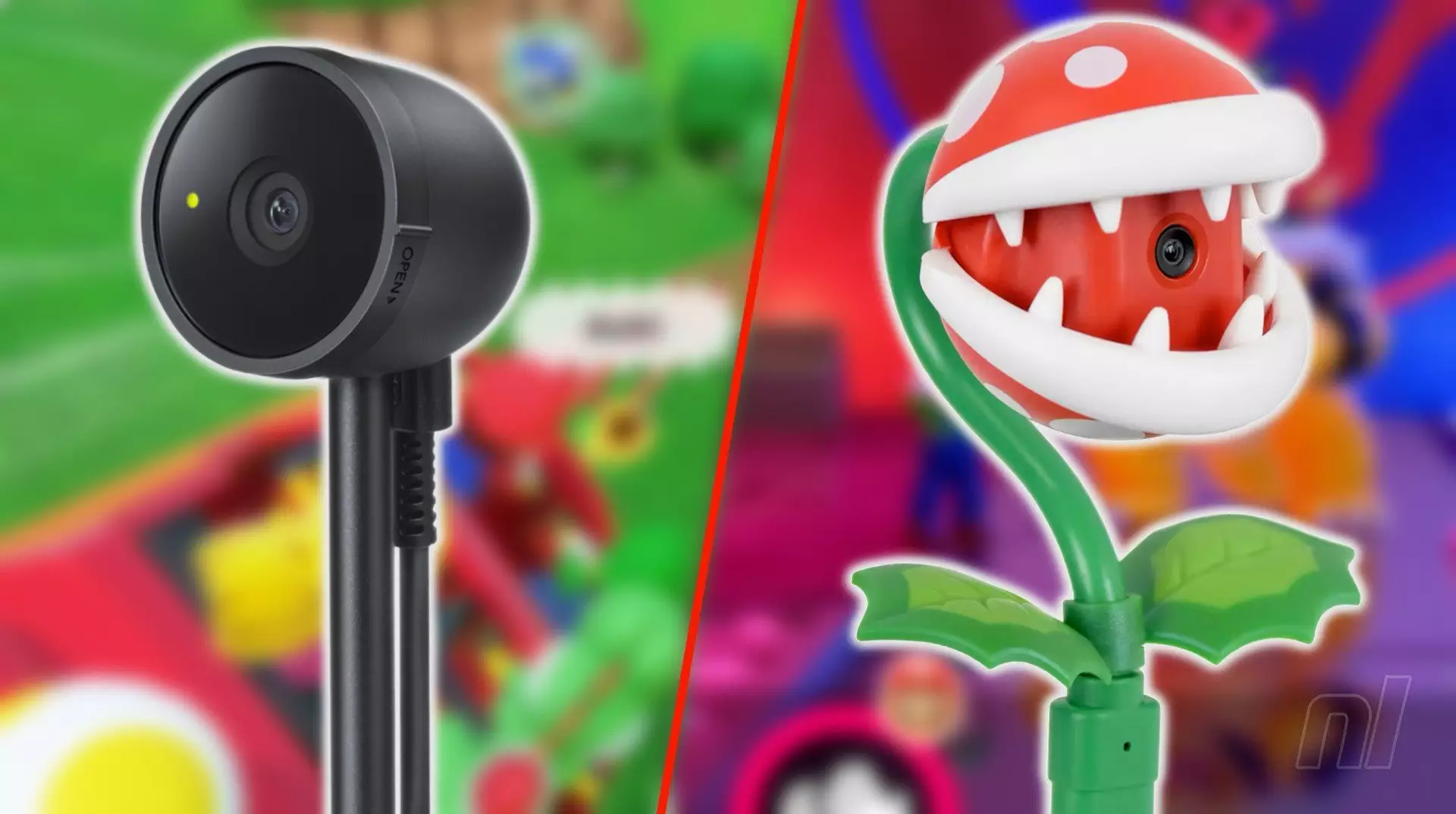The Nintendo Switch 2 has arrived, and with it comes the expectation for a seamless gaming experience. One of the most intriguing features of this console is its ability to support USB-C cameras, which promise to enhance gameplay through streaming and creating content. However, as is often the case with new technology, the reality is a bit murkier than the initial claims suggest. While Nintendo’s official statement indicates that players can utilize third-party USB-C cameras, the caveat that “some cameras may not work” leaves plenty of room for confusion. This article delves into the complexities of choosing the right camera for your Switch 2 setup, while illuminating the intricacies that gamers should consider before making a purchase.
Understanding Compatibility: The Good, the Bad, and the Unknown
At the heart of the issue lies a nuanced compatibility landscape. While the idea of plugging in any USB-C camera seems appealing and straightforward, the stark truth is that a significant number of popular options fall short of expectations. With Nintendo encouraging players to take advantage of the compatibility testing feature built into the console settings, the question arises: what if you haven’t purchased a camera yet? Unfortunately, gamers may find themselves in a tough spot, grappling with the reality that the most popular brands don’t guarantee compatibility.
A growing compendium of user-generated lists on platforms like Reddit illuminates which cameras hit the mark and which falter. Gamers are actively sharing their firsthand experiences, helping one another navigate the minefield of options. Surprising revelations are coming to light, such as USB-A cameras that may connect successfully with the Switch 2 via adapters, a fact that many enthusiasts can find advantageous.
Popular Choices: What’s Worth Your Money?
Despite the potential pitfalls, there are some standout cameras that consistently perform well with the Switch 2. Brands such as Logitech have emerged as reliable contenders, boasting a wide range of affordable to high-end options suitable for various budgets. For gamers looking to achieve high-quality video, the Logitech Brio series presents an attractive array of choices at different price points, proving that expense doesn’t always equate to outstanding performance.
Among the noteworthy mentions are the aoni A20, priced at a mere $19, alongside various models from Logitech that range from $29 to $129. Removing the frustrations often faced when selecting an accessory, these options offer gamers the flexibility to experiment with non-Nintendo gear. However, users should be cautious and research thoroughly before investing, as not every popular brand is created equal.
The Pitfalls: Cameras You Should Avoid
While some brands shine in compatibility, others have drawn considerable disappointment from fans. Notably, equipment from Elgato, Sony, and Insta360 have been frequently flagged as problematic, with many users reporting unsuccessful attempts to get them functioning with the new console. Unexpectedly, even high-end offerings like the Logitech Brio 4K are experiencing complications, leading users to question the suitability of their chosen setups.
Gamers ought to arm themselves with knowledge and consult compatibility lists before making hasty purchases. Empirical evidence from peers can offer invaluable insights, guiding you through options that might initially appear promising.
Engaging with the Community: Sharing Experiences
As the gaming community rallies around the challenges posed by camera compatibility with the Switch 2, a vibrant dialogue has begun to form. Users passionate about gaming and content creation are encouraged to share their personal triumphs and failures with various third-party cameras. As this exchange of information grows, so does the potential for a more cohesive understanding of what works and what doesn’t. Users can gain satisfaction not only from their expansive gaming library but from the connections made with like-minded individuals, further enriching the gaming experience.
It’s clear that whether you are considering up-and-coming brands or relying on tried-and-true favorites, the evolving landscape of camera compatibility represents a microcosm of the gaming landscape itself: dynamic, collaborative, and full of unexpected turns. Therefore, the key to a successful gaming setup lies in proactive research and engagement with the community to keep the fun going!

